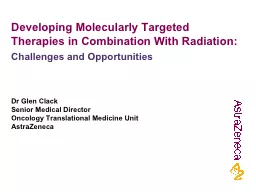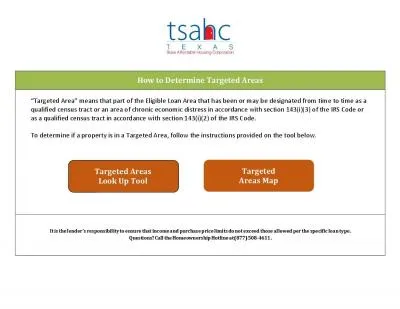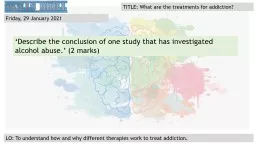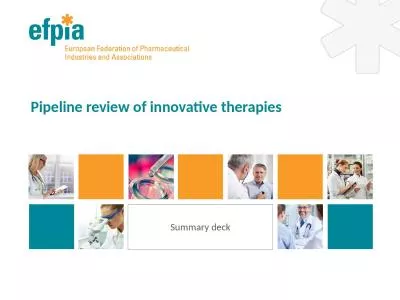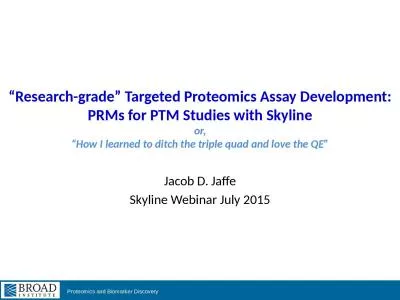PPT-Developing Molecularly Targeted Therapies in Combination Wi
Author : alexa-scheidler | Published Date : 2015-11-07
Dr Glen Clack Senior Medical Director Oncology Translational Medicine Unit AstraZeneca Challenges and Opportunities 2 Author 00 Month Year Set area descriptor
Presentation Embed Code
Download Presentation
Download Presentation The PPT/PDF document "Developing Molecularly Targeted Therapie..." is the property of its rightful owner. Permission is granted to download and print the materials on this website for personal, non-commercial use only, and to display it on your personal computer provided you do not modify the materials and that you retain all copyright notices contained in the materials. By downloading content from our website, you accept the terms of this agreement.
Developing Molecularly Targeted Therapies in Combination Wi: Transcript
Download Rules Of Document
"Developing Molecularly Targeted Therapies in Combination Wi"The content belongs to its owner. You may download and print it for personal use, without modification, and keep all copyright notices. By downloading, you agree to these terms.
Related Documents

